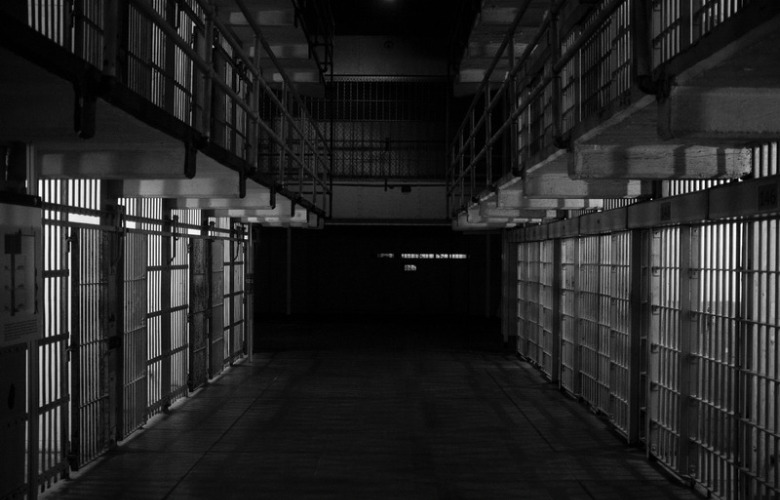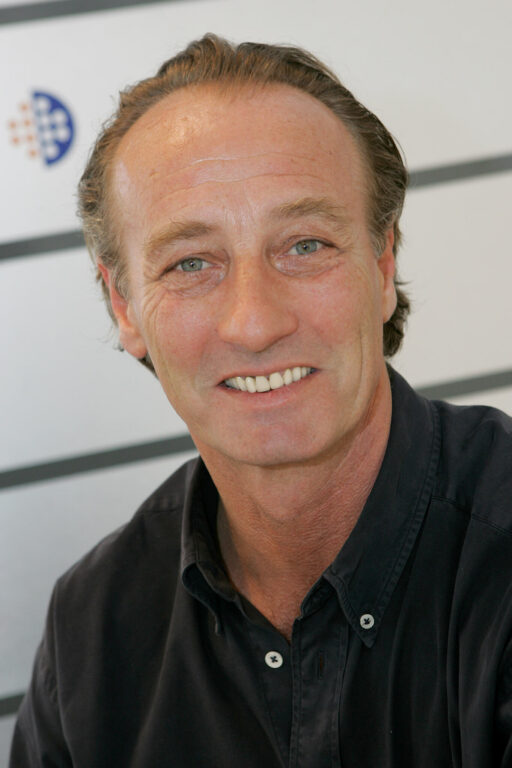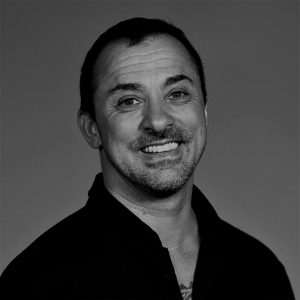
Meet Choreographer and Director Philippe Talard. Philippe has a long and successful career during which he has created a plethora of performances. At one point, he began to specialize in creating performances with prison inmates in correctional institutions. This in several different countries. Find out more, as Philippe tells us about his experiences in this article…
Let me give you a bit of general background about my life and career first…
I am adopted, and as most adopted kids I have special sensibilities towards the world. A loneliness and feeling lost which always lingers in the background.
My adoptive parents gave me a lot of freedom. At school I wasn’t the best. I was a very hyperactive child. Which is why I started dancing. And parents didn’t mind that I did.
In 1972, I began studying at the Rosella Hightower School of Dance in Cannes. The school offered the opportunity to explore many different forms of expression. Classical dance, modern dance, theatre, mime, painting. It was a very complete artistic education.
After winning a prize at the international dance competition in Lausanne, I studied six months at the Jhon Cranko dance school in Stuttgart. Then, I joined the “Ballet du XX Siècle de Maurice Béjart” in Brussels.
I loved dancing with Béjart. There, I learned a lot about the sense of theatre.
In 1977, after Béjart, I joined the National Ballet of Portugal. It was the time right after the revolution. And a friend of mine, Armando Jorge, created this national ballet company. It was a good experience to start this venture together with him and his other dancers.

After Portugal, I went to Brazil to work with Jorge Garcia, a Cuban choreographer. He was the ballet director at the “Teatro Municipal do Rio de Janeiro” at the time.
This is also where I met my wife, Rosangela Calheiros. She was the principal dancer of the company.
In 1981, my wife and I joined the “Tanz-Forum Koeln” in Germany together, under the artistic direction of Jochen Ulrich. We stayed for altogether six years.
The Tanz-Forum is also where I began choreographing.
At that time, in the eighties, theatres were led entirely by their directors. The directors had the oversight and control over everything. The company was their baby.
After that, I became the director of the “Ulmer ballet,” also in Germany.
And three years later, in 1991, I took over as director of the National Ballet in Mannheim. I stayed for ten years. Mannheim was a bigger company with twenty-five dancers.
They stayed on for many years. I like to keep the people I enjoy working with around for a long time. I don’t like change much and rather enjoy consistency.
When I finished in Mannheim, I went to Luxembourg but found it hard to get a foot on the ground. Luxembourg has great theatres but they are not particularly open to outsiders.
We did three performances. One for the inmates, one for their families, and one for a regular audience. You had to apply to come in, due to prison regulations.
Luxembourg was where this all began for me. I loved working with the inmates and since twenty years now I’ve been doing this in different countries and different prisons.
A few years later, in Rome, we did Romeo & Juliet and succeeded again in being allowed to mix men and women. Normally, this isn’t allowed in the prison system. We had dancers, musicians, and singers. It was quite the experience.
The scope of the productions usually depend on how much funding I have.
From Rome, I went to work in the Prison in Tegel, Berlin.
Often, there were prisoners who turned out to be great actors. Some of them can’t move well. But in countries where it is tradition, like the Czech Republic for example, many of them can dance and also sing very good.
In Ostrava we ended up being allowed to do performances not only in the prison, but also on the actual public theatre stage in town.
The prisoners were brought into the theatre in chains. Lots of guards were posted everywhere. The prisoners were then freed for the performance and returned in chains to the prison after.
It was an extraordinary experience for all of us. For the creative team, the inmates, as well as for the public.
I did my utmost best to integrate the prisoners so well into the production that it was impossible for the audience to distinguish between inmates and professional artists.
As mentioned earlier, often inmates are incredibly talented actors. They have a past and something in common with the characters that they are playing. In some cases they have lived exactly what is in the text. You cannot find that in artists.
After Ostrava, I spent a lot of time in Italy.
I became good friends with Carmelo Cantone, the general director of many Italian prisons.
This put me in the great position of always being able to ask him in which prison I should do something next. To which he might respond, “We have problems in this institution. The prisoners are restless. They need to be occupied doing something.”
In San Gimignano, I did my first production involving prisoners from the mafia.
Most of them are extremely rich. They don’t want to be released because outside they might be killed.
One half of the San Gimignano mafia prison population was a generation of killers. Very dangerous. But charming and gentle as well. They were between thirty and forty years old.
The other half was comprised of the mafia chiefs. They were all between about forty and eighty years old. These guys were incredible. Amazing singers. Definitely not dancers. But they had abundant charisma to bring on stage.
I remember one prisoner. He was going to be released after forty years. When we spoke, he said to me, “Philippe, you are really an angel. I want to give you a present. I offer you a crime. Very easy. If you want someone to be killed you just tell me, and I’ll have him killed.”
I was touched and said thank you but, so far, haven’t taken him up on his offer.
The last prison production I did was in Lecce.
There, we arranged with the director of the prison to perform three times inside. But we were also able to do three performances in the beautiful “Anfiteatro Romano,” in the center of the city, with room for 2,000 audience members.
Guards were everywhere. But this didn’t take anything away from the power and beauty of the performances.
Normally, creating a production in prison will take three to four months. Two months preparing on the outside. Then two months with artists and inmates together. Basically, we prepare outside to then put the pieces together like a puzzle.
What is amazing about working with prison inmates is also that sometimes you can effect positive change for them.
Sometimes, the prison director will say, “They have shown so much integrity and discipline while performing for this production, we’ll knock two to three years off their sentence.” Or, maybe, their status inside the prison will be changed to a better level due to their positive engagement.
Lecce was so big and just perfect. An incredible experience for all of us.
We were surrounded by Israelis. And it felt as if we were in a giant prison.
Palestinians have been born into occupied territory since 1948. They can almost never get out.
For our production in the camp, we had young people between fifteen and twenty-two years of age on stage, to perform “Majnoun and Layla”, the Arabian equivalent of Romeo and Juliet. The story comes out of the “1001 Night” collection.
We performed outside and, thankfully, the Israelis didn’t interfere.
In Palestine, they have a special folklore dance called Dabka. I used this local element and mixed it with contemporary movements.
A Spanish dancer, Ana Arroyo, was there too, bringing flamenco into the mix, and Konan Kouassi, a traditional African dancer.
The performances were a success.
We had a group of local Capoeira dancers and used a lot of their abilities and capabilities. We also had a Brazilian dancer, Marcia Jaqueline, a famous dancer from Rio de Janeiro and Salzburg.
In this context, we did Romeo & Juliet again. Marcia, a fantastic classical dancer, performed “Juliet” and was surrounded by eighteen Capoeira dancers. It was quite a special mix.
In March 2019, I came to France and began to prepare everything to do Othello in the central prison of Rebibbia in Rome. I was due to meet with the inmates at the beginning of March.
I wanted to have three dancers, Ana Arroyo, Mylena Leclercq, and Konan Kouassi as the only professional artists for the production. The rest would be covered by prisoners.
Now, at the end of 2020, it is still impossible to come back to prison. There were also quite a few revolts inside because of lockdown.
They couldn’t go outside, no visitors. They were much more isolated than usual. Everyone is depressed, on standby.
I come from a wealthy family, so I have no financial worries. But I see many of my friends who have no wealthy family background. So many of them struggle. It is very sad to see. All of them want to work, continue their projects. Yet the pandemic keeps us in limbo.
I hope, as soon as the vaccinations have been distributed everywhere, we will be able to train and perform again.
Even in times without a pandemic, the budget for culture in most countries is normally only 1% of the entire state budget. Which is absolutely nothing. If you have no subventions, you can’t do much.
Now, with more and more Zoom performances we are proving to them that we do not need physical stages.
What if it comes to a point where they say, “We see you are fine without actual venues to perform in. We won’t need to re-open the theatres.” For the authorities this is a very advantageous and practical situation. They will save a lot of money. And their tendency is to rather want to close theatres anyways.
Artists should manifest that, yes, we can make it for a little time online. But what we do in the virtual world is not an actual performance. It is just information. You can do a promotion online, or show a trace of how it can feel. But performance art is not like a sculpture or a painting.
In performance, in dance, you need the direct contact between the artists and the audience. It’s what’s most important.
I hope we can soon get back to work. Performance artists, and musicians as well. You can practice and train alone like a machine. But if you don’t end up performing what you have practiced then it is for nothing. It’s like a sentence with all the proper words, yet there is no meaning, no message, no conclusion.
For the end of this year, I wish for all of us that soon we will be able to once again share meaningful artistic expression on physical stages around the world. And I am very much looking forward to continuing with my prison productions.
Philippe Talard’s Facebook page
Meet Nigerian Film Maker Ema Edosio Deelen
Les Farfadais: When Circus Art Changes The World


Liam Klenk was born in Central Europe and has since lived on four continents. Liam has always been engaged in creative pursuits, ranging from photography and graphic design, to writing short stories and poetry, to working in theatre and shows. In 2016, Liam published his first book and memoir, 'Paralian'.
Read Full Profile© 2021 TheatreArtLife. All rights reserved.

Thank you so much for reading, but you have now reached your free article limit for this month.
Our contributors are currently writing more articles for you to enjoy.
To keep reading, all you have to do is become a subscriber and then you can read unlimited articles anytime.
Your investment will help us continue to ignite connections across the globe in live entertainment and build this community for industry professionals.